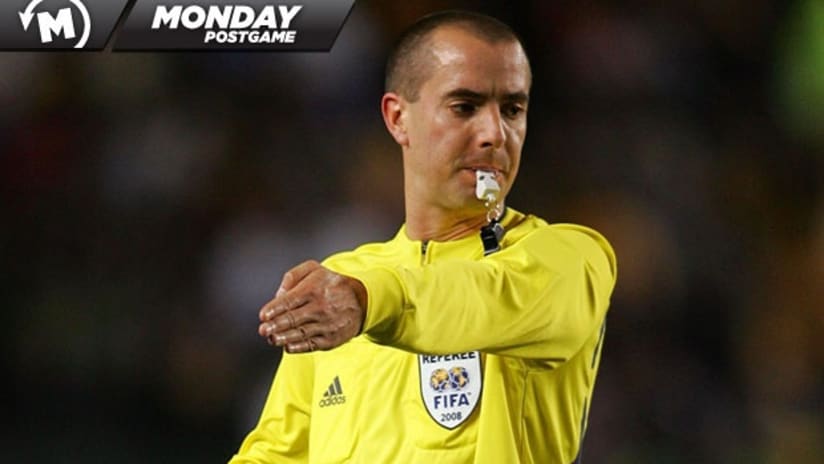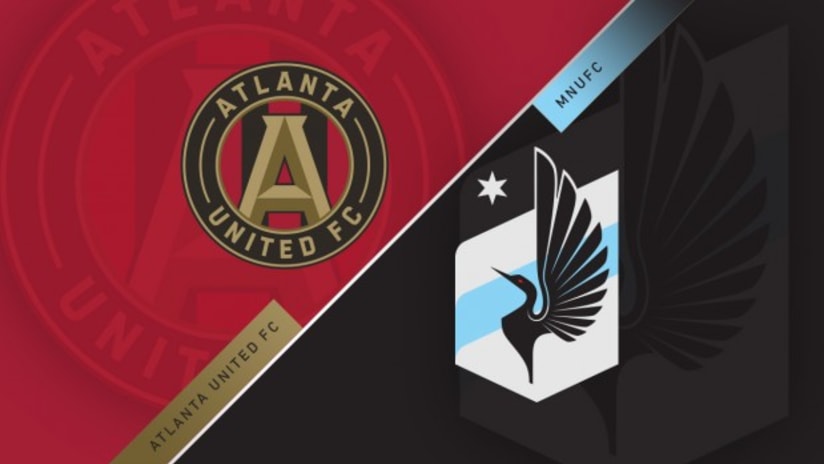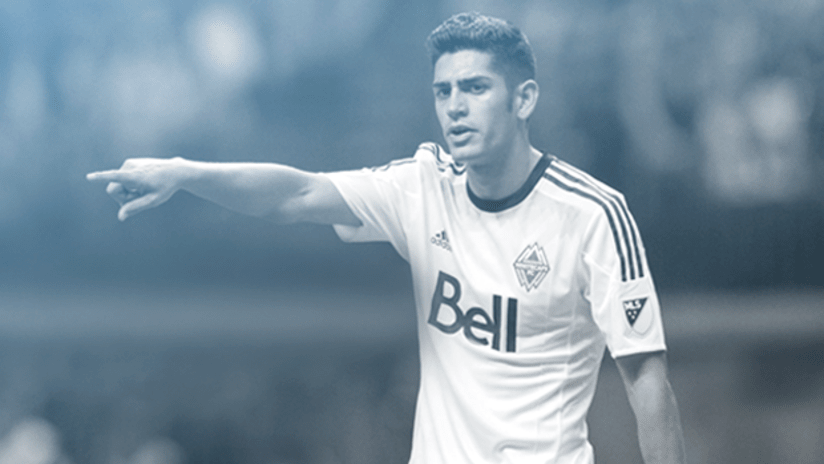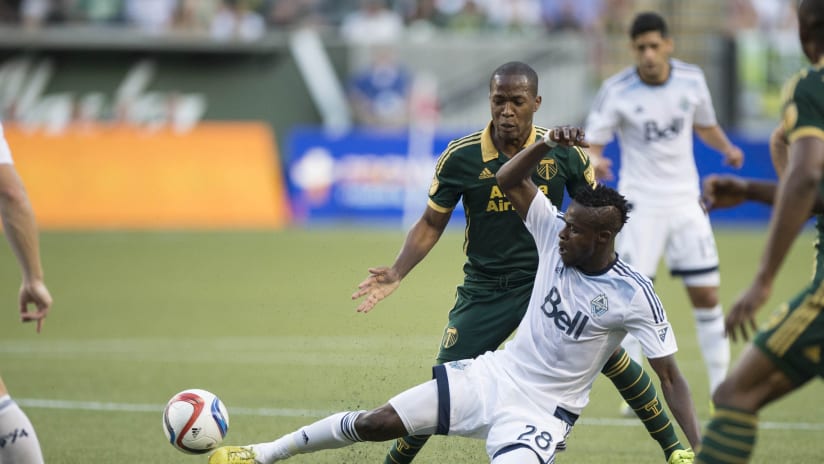A pair of 4-2 aggregate wins on Sunday sent the Houston Dynamo and the LA Galaxy back to an unexpected rematch of the 2011 MLS Cup final. The Dynamo got a first-half goal from Boniek García and absorbed a late strike by D.C. United midfielder Branko Boskovic to professionally see out a 1-1 draw that was good enough to advance.
LA saw their 3-0 aggregate lead threatened by a fired-up Seattle Sounders FC side, which took a 2-0 lead before a disputed penalty delivered a pivotal goal to the visitors, who advanced despite losing the second leg 2-1.
In today’s Monday Postgame, John Bolster takes a closer look at that penalty decision, and the handball rule in general, which is surprisingly misunderstood.
Do you think that the Adam Johansson hand ball should have been punished with a PK?
There’s no rule more fundamental to the sport of soccer than the rule against using your hands. It’s the first thing small children are taught when they take up the sport. It’s the primary law of the game, one you internalize and then essentially forget because it becomes second nature.
The trouble is, most fans, coaches, and players — even some at the professional level — really do forget all about it. Or, more accurately, they’ve never looked at the letter of the law as it’s written.
In fact, after Sunday night’s Western Conference Championship second leg between Seattle and LA, I’m not sure that anyone — including the referees, and the authors of the law — can give a satisfactory answer to the question the guys at ExtraTime Radio tacked up on their After Hours set following the Sounders–Galaxy tilt:
What is a handball?
By the Book
The Laws of the Game are pretty direct (and brief) on the subject: The infraction is covered in Law 12, on page 36, which states that a player is in violation if he “handles the ball deliberately (except for the goalkeeper within his own penalty area).”
WATCH: Johansson whistled for handball
That’s all the law says about handballs. There’s no rule against unintentionally handling the ball.
In FIFA’s official Interpretation of the Laws of the Game, a handball is defined as “a deliberate act of a player making contact with the ball with his hand or arm.”
That document advises refs to look at other factors — such as ball-to-hand versus hand-to-ball movement, the distance between the player and the ball (“unexpected ball”), and the position of the hand (or arm) — to determine if the contact was deliberate. (See page 115 of the Laws.)
But the fundamental idea remains the same: The handling must be deliberate. That seems pretty clear, doesn’t it?
In Practice
The law does seem clear — but it also seems to rule out roughly 60 percent of the handballs that are routinely called in the game.
WATCH: Schmid reacts to Sounders’ loss
When was the last time you saw a player deliberately handle the ball? Sure, there’s the occasional Hand of God incident, along with a Thierry Henry-vs.-Ireland moment (or Luis Suárez vs. Ghana).
And there are times when a player will extend an elbow at his side to block a shot, or use his upper arm during a chest trap.
But it’s not something that happens very often (and that goes double for defenders in their own box). See the opening sentence of this article for the reason why.
Yet, while deliberate handballs are relatively rare, whistles for handballs occur fairly often.
This discrepancy suggests that the letter of the law differs significantly from how it’s enforced.
Spirit of the Law
Consider last night’s crucial decision on Adam Johansson that led to Robbie Keane’s penalty, which essentially booked LA’s return to the MLS Cup final. (Well, that, and their 3-0 rout in the first leg.)
Many Seattle fans, um, took issue with the call, citing the ball-to-hand nature of the play, and Johansson’s close proximity to Keane (i.e., he couldn’t have gotten out of the way) as clear evidence that the handball was not intentional.
READ: Keane finally on the right side of handball history
But many neutral fans — and all Galaxy fans — didn’t have a problem with the decision, pointing out, rightly, that it would be given more often than not in most leagues around the world.
The ball clearly contacted Johansson’s left hand (and may also have hit his right hand afterward), and that contact prevented Keane’s cross from reaching its destination.
That consideration — whether the handball benefits the potential offender — is not supposed to factor into the decision, but it’s safe to say that it does (and probably should). If that play happens in midfield, and stops a Galaxy counterattack, do you think LA get the call? You bet they do, even though the play was clearly ball-to-hand.
It’s also safe to say that the position of a player’s arms is a widely misinterpreted element of the handball rule. Some observers invoked it last night to explain why a penalty wasn’t given when the ball contacted Seattle defender Jhon Kennedy Hurtado’s arm in the box earlier in the game. His arms were against his body, the reasoning went, so he wasn’t reaching out to contact the ball deliberately.
READ: Controversial penalty killed Sounders' momentum
Referee Mark Geiger cited Johansson’s arms as a reason he did give the penalty in the second instance, saying the defender had extended his arms outside his body, making himself bigger.
Note that he didn’t suggest the extended arms proved the handball was deliberate. No, Geiger implied that the arms being out to block the pass gave Johansson an unfair advantage. You can’t use your hands in soccer, and whether he intended it or not, Johansson’s hand clearly came into play, in the box, and blocked a Galaxy pass.
As one commenter suggested, if the Seattle fans who feel wronged had been on the other side of the equation, and their team had not gotten the call, wouldn’t they be equally outraged?





